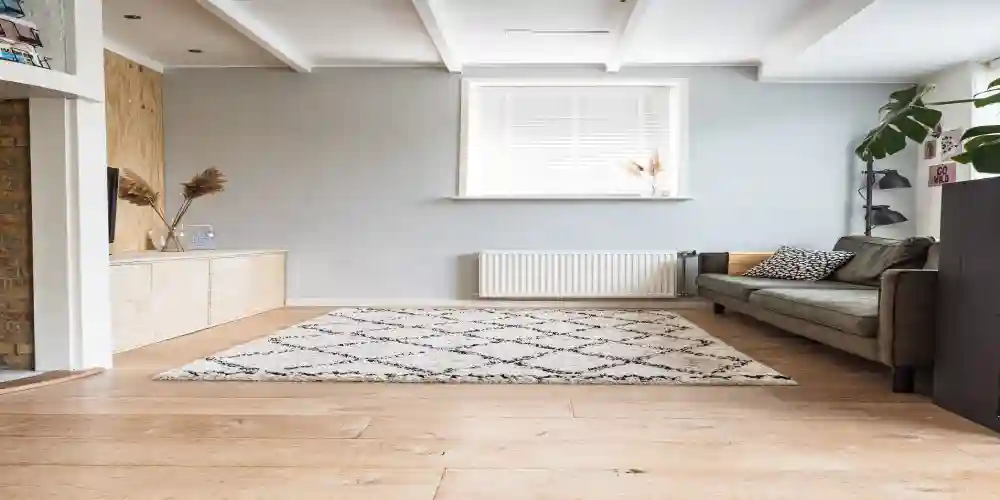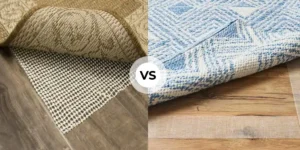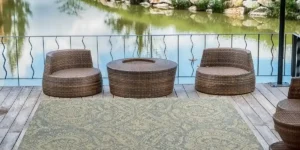Compared to other flooring, laminate flooring is a better alternative. It is affordable, easy to install, maintain, clean, aesthetically pleasing, and durable.
Also, it mimics real wood flooring and is available in various styles and colors. So, it is suitable for homeowner decor preferences.
Since it was invented in Sweden in the late 70s, it has been one of the most popular flooring options. Yet, many people ask a common question: Does laminate flooring make your house colder?
The short answer is no. Laminate flooring doesn’t make your house cold on its own. It doesn’t have a direct impact on the temperature of your home.
But, compared to some other flooring types, laminate might feel a bit cooler to the touch.
Why? Because it doesn’t trap heat like carpet does. It should not intimidate you from installing laminate flooring.
This article will offer simple hacks to reduce the cold effect. Also, it will help you reduce the energy bills you’d invest in keeping your home warm.
Why Does Laminate Flooring Make Your House Colder?
The visible photographic layer of the laminate flooring mimics wood flooring. Because it is comprised of fiberboard materials fused by a plastic protective layer.
The fiberboard layering offers excellent heat resistance. But it does not offer enough insulation.
So, it makes laminate not an ideal flooring for both wet and colder areas. But it is partly better for damp areas with concrete subfloors.
Moreover, it adds a disadvantage to laminate flooring. Especially for individuals living in cold areas or during cold seasons. The fact is highly water-resistant.
Yet, the joints between planks can also allow water/moisture to penetrate. And makes the room feel cold. Over time, it can make the laminate flooring fiberboard core swell and start chipping.
So, it is advisable to avoid installing laminate flooring in wet areas like the bathroom.
How to Keep Laminate Flooring Warm?
Considering your climate and geographical location is important before installing laminate flooring. Because it determines the temperature feel of your entire space. And helps you decide whether to install it or not.
Insulate the Subfloor
Insulating the subfloor is a smart move if you want to keep your laminate floors warm. When installing laminate flooring, be sure to lay down solid insulation boards first. Or rigid foam insulation material (underlayment) before installing the planks.
Arranging planks directly on the subfloor. This will allow laminate flooring to inherit the material’s cool natural properties.
Laying insulation materials is an effective solution to keep your home warm. Because it prevents unnecessary heat.
Underlayment breaks moisture contact between the subfloor and the laminate floor. Plus, it minimizes the cold effect in your space and cuts down on energy costs.
After installing the subfloor and placing the planks, add mineral wool between the joints.
It prevents moisture from penetrating below the planks and heat loss through joints. You can also soundproof your home, which enhances its cozy feel by insulating it.
Must See: Cork vs. Foam Underlayment: Which is Right for Me?
Carpet
Carpet is also an excellent solution to keep your home during the cold seasons of the year. But, it is not ideal in wet areas. The carpet provides an insulation advantage in the space against heat loss.
But, it would be best if you opted for premium quality carpet. This is made out of dense foam or wool with longer and thicker threads. So, it offers excellent insulation and has the most benefits in the winter.
Carpets also add a touch of comfort and style to your space. So, it’s an easy and effective way to bring some warmth into your home.
Make use of Rugs

Rugs are your best shot if you want a cheap, timeless warming solution. You should place rugs in high-traffic areas. It provides laminate flooring protection against elements, cushioning, and warmth in your space.
So, we recommend using sheepskin or shaggy/fluffy rugs. Because, they offer excellent insulation properties ideal for the kitchen, bathroom, and bedroom.
Also, rugs improve the interior design of your space. But still, placing rugs with floor-friendly padding enhances grip and prevents slippage.
Keep in mind that do not opt for latex or rubber-padded rugs. Because it leaves a sticky mess/marks. And it causes scratches and discolors on the laminate flooring.
Instead, we recommend opting for felt rugs. It is made from natural materials like bamboo, grass, jute, cotton, wool, or natural fibers. Or rugs with thin and smooth padding made from plastic without dark-colored dyes.
Cranking up the Central Heating System
The central heating system is designed to produce heat from a central location. Then distribute it to the entire house.
Here are many types of central heating systems are available in the market. This includes furnaces, under-floor heaters, heat pumps, boilers, electric heaters, and solar heaters.
Furthermore, central heating systems vary depending on the type of heating distribution system. Because many houses use radiators, forced air systems, steam radiators, or electric baseboards.
You should install a central heating system with a thermostat, timer, and sensor. It lets you set up the temperature whenever you want it, based on your preferences.
But, the cost of purchasing and installing the central heating system is expensive. And adds up to the cost of the energy bill in the long run.
A central heating system with under-floor heating is the best choice for cold seasons and cold climates. This heating system provides a sure way of keeping your home warm. Because it radiates heat through an underlayment between the subfloor and surface flooring.
The heat also rises into the rest of the room, providing a conducive temperature feel to the space.
Also See: What’s The Most Efficient Heating System For Your Home?
Read More on Laminate Floors
- Laying Laminate Flooring: 13 Common Mistakes to Avoid!
- Can You Nail Down Laminate Flooring? (Answered)
- How to Dry Water Under Laminate Flooring? (A Step-By-Step Approach)
- How to Fix Side Gaps in Laminate Flooring? (5 Best Ways)
- 9 Best Ways to Keep Rugs From Slipping on Laminate Floors (Must-Try!)





